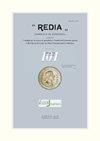IMPACT OF NATURAL ENEMIES ON LARVAE OF THAUMETOPOEA BONJEANI (LEPIDOPTERA NOTODONTIDAE) IN ASSOCIATION WITH THAUMETOPOEA PITYOCAMPA IN NORTHERN ALGERIA
IF 0.6
4区 生物学
Q3 ZOOLOGY
引用次数: 1
Abstract
The cedar processionary moth, Thaumetopoea bonjeani (Lepidoptera: Notodontidae), is a serious pest of the Atlas cedar Cedrus atlantica in north-western Africa and it is involved in the decline of this endangered tree species. Natural enemies of the cedar processionary moth are poorly known, especially for parasitoids, predators and pathogens of the larval-pupal life stages. Mature larvae were collected and examined in 2014 and 2015 in natural stands of Atlas cedar in the Djurdjura (northern Algeria), in occurrence with pine processionary moth Thaumetopoea pityocampa. The overall mortality rate of larvae of Thaumetopoea bonjeani ranged from 26.4% to 31.1%, with generalist predators and parasitoids being more effective than pathogens. Four primary parasitoid species were recorded, of which four tachinid flies and one braconid wasp, as well as four predatory beetles and one fungus. The most important species were the carabid Calosoma sycophanta and the tachinid Compsilura concinnata. The cooccurrence of T. bonjeani and T. pityocampa may offer to generalist natural enemies an extended period of availa- bility of similar preys, as the two processionary moths have different life cycles. The sharing of natural enemies between the two species of Thaumetopoea can mitigate the outbreaks of both species.天敌对阿尔及利亚北部斑胸蛛和斑胸蛛幼虫的影响
雪松行进蛾Thaumetopoea bonjeani(鳞翅目:Notodontidae)是非洲西北部阿特拉斯雪松的一种严重害虫,它参与了这种濒危树种的衰退。雪松行进蛾的天敌鲜为人知,尤其是寄生蜂、捕食者和幼虫蛹生命阶段的病原体。2014年和2015年,在久尔朱拉(阿尔及利亚北部)阿特拉斯雪松的天然林中采集并检查了成熟幼虫,其中包括松树加工蛾Thaumetopoea pityocampa。邦赫尼塔梅托波虫幼虫的总死亡率在26.4%至31.1%之间,其中广泛捕食者和寄生蜂比病原体更有效。记录了四种主要的寄生蜂,其中四种是刺桐蝇和一种是荆棘蜂,还有四种是捕食性甲虫和一种真菌。最重要的物种是黑尾锦鸡和短尾锦鸡。邦杰尼蛾和皮氏蛾的共同出现可能会为一般天敌提供类似猎物的长期可用性,因为这两种行进蛾的生命周期不同。Thaumetopoea的两个物种之间共享天敌可以缓解这两个物种的爆发。
本文章由计算机程序翻译,如有差异,请以英文原文为准。
求助全文
约1分钟内获得全文
求助全文
来源期刊

Redia-Giornale Di Zoologia
ZOOLOGY-
CiteScore
1.20
自引率
20.00%
发文量
18
审稿时长
>12 weeks
期刊介绍:
Redia supports its long history of basic and applied research in entomology and invertebrate zoology in the field of crop and forest tree protection responding at the same time to the increasing need of innovation and technological improvement.
 求助内容:
求助内容: 应助结果提醒方式:
应助结果提醒方式:


